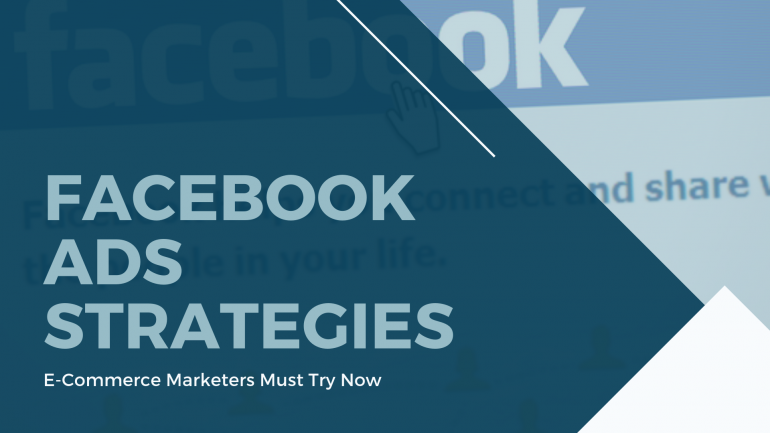How do you improve your conversions?
With over 2.38 billion monthly active users, Facebook is probably the best place to get qualified leads. Running Facebook ads is a highly effective way to boost your conversions.
But just like any other marketing campaign out there, how well those ads perform are entirely dependent whether you have a winning strategy or not.
In this post, we’ll walk you through the ten Facebook ads strategies that marketers must know to boost their conversions.
1. Communicate Your Brand’s Story Through Ads
Despite Facebook’s largely commercial appeal, it is still a social platform. A lot of people still come here to connect with others rather than to shop.
That’s why it gives you a chance to connect and a build relationship with your audience.
Ads are an excellent way to tell your brand story.
According to a study, crafting a series of ads that directly conveys your brand message increases your conversion rates.
Similarly, you can also tap into the power of video to tell your story. Videos work because:
- They tend to be short
- They’re fast-moving
- The message is easy to understand
2. Build Lookalike Audiences
The platform can also let you find new prospects based on your previous customers’ characteristics.
Lookalike audiences let you advertise to users that are similar to your previous customers. These people are interested in your products as well.
Lookalike Audiences uses Facebook’s algorithm to look for people that have the same interests and characteristics of your existing clients.
To create one, you need to have a Custom Audience first. Similarly, you can create it from your conversion tracking pixel data or on your Facebook fans.
3. Repurpose Your Old content
Time on the internet is a precious resource. Repurposing your already existing content is one of the smart ways that will help you save time on the content creation process.
Here’s the thing, you don’t need to be continually creating content day-in and day-out. The secret is getting the material that you already have in the hands of more people.
Repurposing your content allows you to target a new audience. A post that might have performed well in the past might also work better as an ad.
4. Set-up Facebook Dynamic Ads
Through Dynamic Ads, you can show single or multi-products ads to prospects who visited your site based on the products they added to the cart, viewed, or even bought.
Here’s how you can set Dynamic Products Ads:
- Upload your product catalog to Facebook Business Manager. Place all the products that you want to promote and all the information that you want to show on each product.
- Put a custom audience pixel to your website. Make changes to it so that it reports users’ buying behaviors.
- Build a dynamic template. The platform will fill it with products and other related info. Place a title in your ads, and put in keywords and product names from the product catalog.
- Set up the display product ads in the Power Editor. Specify if you want to specifically advertise your products from the whole catalog, or just particular categories. Then, run your ads.
5. Utilize Multi-Product Ads
Facebook’s multi-product ads enable you to showcase several products in a single ad. Not only that it gives users many options to choose from, but it also boosts your conversions.
So, the more relevant the product a user sees, the more likely that they’ll buy.
Aside from that, you can also use it to showcase the various benefits of a single product.
Multi-product ads can be set up via the Power Editor. It can also be utilized as a part of a standalone ad or a product campaign.
6. Add Conversion Tracking Pixel to Your Website
In its most basic form, a conversion-tracking pixel is a small code that effectively tracks users’ behavior on your site.
Not only that it tracks customer behavior and conversions, but Facebook can also use its data to optimize your campaigns and create lookalike audiences.
When you add a conversion tracking pixel on the checkout, you can track whatever actions users take the moment they click on your ad. Therefore, it allows you to track your ROI effectively.
To achieve optimal results, install the conversion tracking pixel before you start running your campaigns.
7. Run Retargeting Campaigns
Surprisingly, 72 percent of online shoppers abandon their carts before making any purchase.
Without running retargeting campaigns, only eight percent come back and buy. However, with retargeting, approximately 26% do come back to complete a purchase.
Moreover, 70 percent of web users that are retargeted with display ads are more likely to convert.
Now, it all becomes clear: Retargeting your audience improves your conversions and sales.
8. Engage with Brand Influencers
To optimize your results, you can choose to partner with an influencer.
Influencers are people on social media that have amassed a large following. They have a loyal set of followers who are keen to know their views and opinions on topics that are directly related to their niche.
Because their followers trust their opinions, influencers become a crucial element in creating a highly effective advertising campaign.
You can work with influencers in your industry and ask them to publish reviews of your products. When their followers see the influencer using the product, they may be compelled to purchase as well.
Through Facebook ads, you can promote these posts and show them in front of more people.
Tell the influencers you work with to use the platform’s Branded Content tool. It would let them run ads on their content. Moreover, you’ll be able to see how well the post is performing. That way, you’ll be able to make adjustments on your strategy.
9. Ensure That Your Landing Pages are Mobile Responsive
It might come as a surprise, but there are approximately 1.15 billion daily active users on mobile as of 2016. There’s also a 23 percent increase year after year.
So without a doubt, mobile optimization is a vital aspect to the success of a Facebook advertising campaign.
Keep in mind that you shouldn’t just choose ads that are explicitly tailored for the mobile screen size. You also need to see to it that your landing pages are mobile responsive.
10. Analyze Data and Spend Wisely
Just like any marketing strategy, advertising on Facebook depends on your budget.
If you want to get the most out of your campaigns, you need to set aside a budget.
So before you start, spend time analyzing your current data and select products and categories that need an extra push.
Your focus should be to showcase the best-selling products that will compel your audience to buy.
See to it that you stay on ROI, know which ads are boosting your sales, and which are the ones that are falling short. Then learn to adjust your spend, audiences, and products accordingly.
11. Partner with a Facebook Marketing Expert
According to Voy Media, a Facebook ads agency, “Paid advertising is one of the easiest ways to grow your page. But you can make that budget grow even further when you choose to partner with a Facebook marketing expert.”
Without the right knowledge and experience, your ads won’t perform as high as they could. As a result, your return on investments will suffer.
These pros know the ins and out of Facebook advertising. So you can leave the details while they work on the output.
Over to You
By applying the methods that we’ve mentioned above, you’ll be able to optimize them based on your results. By being consistent with your strategy, you’ll be able to achieve better results in the long run.







